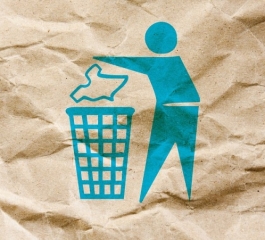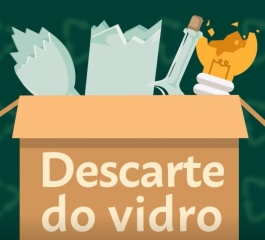Or what are the environmental problems associated with their incorrect disposal? And yet, is the x-ray recyclable?
How to discard x-ray exams correctly?
We recommend forwarding the x-ray plates to collection points, where they will direct them for recycling. In this way, environmental contamination is avoided and the reuse of this material is promoted.
Fortunately, there are companies that specialize in recycling x-ray, tomography, photolithography plates, among others, and these companies often offer collection points.
In addition, health posts, clinics and laboratories also provide collection points for this type of waste.
By making use of these options, we contribute to the protection of the environment and the sustainable use of available resources.
Thinking about the process of discarding x-ray exams and with the intention of extracting silver from radiography in an economical way, without generating hazardous chemical waste, the team from the Federal Center for Technological Education in Chemistry in Nilópolis developed a way to sustainable disposal.
Learn about the following procedure:
The treatment of the radiograph with 2.0% sodium hypochlorite produces a solid residue containing silver in several chemical compounds, in addition to the “clean” radiographic films;
After that, the solid residue is treated with sodium hydroxide in water and heated for 15 minutes, resulting in the formation of silver oxide mixed with impurities;
After heating silver oxide with a sucrose solution for 60 minutes, solid impure silver is obtained, still without luster.
The silver is then heated at 1,000ºC for 60 minutes in a muffle, obtaining pure and shiny silver.
In addition, the “clean” radiographic exams, without silver, can be reused in three ways: by dry point, cutting or painting with graphic ink.
It is worth mentioning the importance of looking for information about nearby places that collect this material and offer an adequate destination for waste radiographs.
Environmental issues associated with incorrect disposal of x-ray exams
Improper disposal of x-rays can lead to serious environmental problems, including chemical contamination of soil and water, which harms local ecosystems and puts human health at risk.
In addition, it directly interferes with food chains. This is because toxic chemicals released by improper disposal accumulate in living organisms.
Causing bioaccumulation and biomagnification problems. This affects animals and, consequently, the humans who consume them.
It is important to highlight that the incorrect disposal of radiography exams results in chemical contamination due to the presence of toxic substances, such as silver, ammonia, chromium and methanol in the x-ray plates.
When disposed of improperly, these chemicals can leak and pollute soil and groundwater, posing a risk to human health and local ecosystems.
It is therefore essential to dispose of radiographs properly, in accordance with local rules and regulations, and to opt for sustainable alternatives, such as recycling.
In this way, we can prevent environmental problems and protect the health of the ecosystem.
Is the X-ray recyclable?
X-ray exams are recyclable thanks to the presence of silver in radiographic plates. Specialized companies collect the radiographs, ensuring the removal of patients’ personal information.
Through the recycling process, silver is extracted to be reused in various industries.
This practice preserves the environment, prevents contamination and reduces the need for raw silver mining.
To recycle your x-ray exams, just contact companies that specialize in medical waste recycling for proper guidance.
Conclusion
In conclusion, improper disposal of x-ray scans can cause serious environmental problems, such as chemical soil and water contamination, impact on food chains, and pollution.
To protect the environment and prevent harm to human health, it is essential to find safe alternatives such as recycling.
Specialized companies can extract silver from radiographic plates for reuse in various industries.
The “clean” they can be reused using techniques such as drypoint, cutting or painting.
Awareness about proper disposal is essential for a more sustainable future, contributing to the preservation of natural resources and protection of biodiversity.


